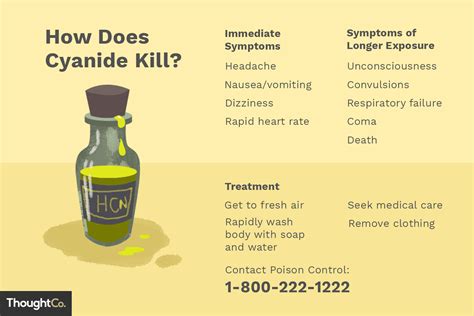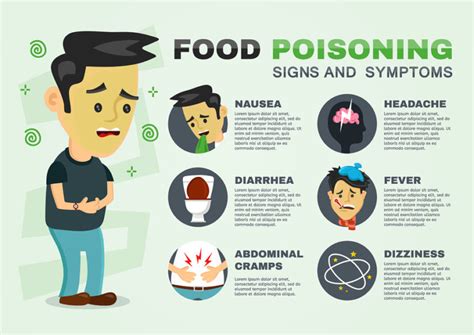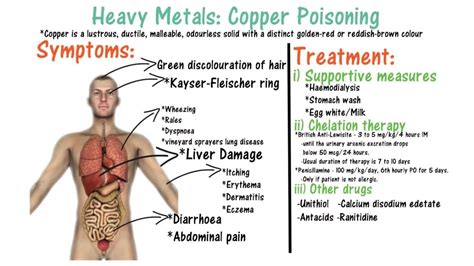
Sewer Gas Poisoning Symptoms
Sewer Gas Poisoning Symptoms
Sewer gas is a mixture of gases that can be found in and around sewer lines, septic tanks, and other plumbing systems. It contains a variety of harmful components, including methane, ammonia, carbon dioxide, and hydrogen sulfide. Inhaling sewer gas can lead to a range of health problems, including headache, fatigue, nausea, dizziness, and even death.
One of the most common symptoms of sewer gas poisoning is a foul odor. This odor is often described as smelling like rotten eggs or sulfur. If you notice this smell in your home or workplace, it is important to take action immediately. Other symptoms of sewer gas poisoning may include difficulty breathing, coughing, chest pain, and irritation of the eyes, nose, and throat.
Sewer gas poisoning can be particularly dangerous for those with pre-existing health conditions, such as asthma or respiratory problems. Children and the elderly are also at higher risk because their immune systems may be weaker. If you suspect that you or someone you know has been exposed to sewer gas, seek medical attention right away.
To prevent sewer gas poisoning, it is essential to properly maintain your plumbing system. This includes regularly inspecting and cleaning your pipes, septic tank, and drains. You should also make sure that your ventilation system is working properly to help remove any harmful gases from your home or workplace. If you detect a foul odor coming from your plumbing system, contact a professional plumber as soon as possible.
In conclusion, sewer gas poisoning is a serious health hazard that should not be taken lightly. If you experience any symptoms of sewer gas exposure, seek medical attention immediately. To prevent sewer gas poisoning, take steps to maintain and properly ventilate your plumbing system. By staying vigilant and taking proactive measures, you can protect yourself and your loved ones from the harmful effects of sewer gas.
Health Risks Associated with Sewer Gas Exposure
Sewer gas is a mixture of various gases, including methane, carbon dioxide, and hydrogen sulfide. Exposure to these gases can pose serious health risks and lead to a range of symptoms, from mild irritation to severe illness.
One of the most common symptoms of sewer gas exposure is eye irritation. This can include redness, itching, and tearing. In some cases, prolonged exposure can even lead to vision problems. Other respiratory symptoms may also occur, such as coughing, sneezing, and shortness of breath.
Sewer gas exposure can also affect one’s digestive system. Symptoms may include abdominal pain, nausea, vomiting, and diarrhea. These symptoms can be especially dangerous for young children, older adults, and those with weakened immune systems.

In addition, sewer gas exposure can have neurological effects. Exposure to high levels of hydrogen sulfide can cause headaches, dizziness, and fatigue. In extreme cases, it can even lead to loss of consciousness or death.
To prevent exposure to sewer gas, it is important to make sure that your home’s plumbing is properly installed and maintained. You should also avoid using chemicals that can produce harmful gases, such as bleach or drain cleaners. If you suspect that you are experiencing sewer gas exposure, it is important to seek medical attention immediately.
Overall, exposure to sewer gas can be a serious health risk and should be taken seriously. By understanding the symptoms and taking preventative measures, you can help protect yourself and your family from the dangers of sewer gas exposure.
Causes of Sewer Gas Poisoning
Sewer gas poisoning can happen to anyone when there is an accumulation of toxic gases in poorly ventilated areas. The most common gases found in the sewer system that can cause poisoning are methane, hydrogen sulfide, and carbon dioxide. If you suspect that you or someone else has been exposed to these gases, it’s essential to take immediate action to prevent serious health complications.
The leading cause of sewer gas poisoning is exposure to high levels of hydrogen sulfide, which is colorless and has a distinctive rotten egg odor. This gas can be produced naturally by decomposing organic matter in sewage treatment plants and septic tanks. It’s also present in household cleaning products that contain sulfuric acid, such as drain cleaners.
Another cause of sewer gas poisoning is exposure to methane gas. This gas is colorless and odorless, making it difficult to detect without proper equipment. Methane gas is produced by the breakdown of organic matter in the absence of oxygen. It’s commonly found in sewer systems, landfills, and agricultural settings.
Carbon dioxide is another gas that can contribute to sewer gas poisoning. Although it’s not typically harmful in small amounts, exposure to high concentrations can lead to unconsciousness and even death. Carbon dioxide is produced by the decomposition of organic matter and is commonly found in poorly ventilated areas.
To prevent sewer gas poisoning, it’s crucial to ensure proper ventilation in areas where sewer gases may accumulate. Regular maintenance of septic tanks and sewage treatment plants can also reduce the risk of exposure. Make sure to use household cleaning products containing sulfuric acid in a well-ventilated area and never mix different types of cleaning products together.
In conclusion, sewer gas poisoning is a serious health hazard that can be prevented with proper care and attention. Knowing the causes and taking measures to avoid exposure is crucial for ensuring the safety of everyone around you.
Prevention and Treatment of Sewer Gas Poisoning
Sewer gas poisoning is a potentially deadly health hazard that can be caused by the buildup of toxic gases such as methane, carbon dioxide, and hydrogen sulfide in poorly ventilated areas. It can occur in homes, workplaces, and other buildings where there are plumbing fixtures or sewer lines.
Prevention is key when it comes to combating sewer gas poisoning. One effective way to prevent this hazard is to ensure proper ventilation in areas where sewer gases may accumulate. This can be achieved by venting pipes and fixtures to the outside, installing exhaust fans, and using natural ventilation methods such as opening windows and doors.

Regular maintenance of plumbing fixtures and sewer lines is also crucial in preventing sewer gas buildup. Broken or damaged pipes should be repaired immediately, and drain traps should be cleaned regularly to prevent blockages. In addition, avoid pouring oil, grease, or other waste materials down drains, as these can contribute to clogs and reduce the effectiveness of drain traps.
If you suspect that you or someone else has been exposed to sewer gas, it’s important to seek medical attention immediately. Symptoms of sewer gas poisoning can range from mild headaches and nausea to more severe symptoms like seizures and respiratory failure. Treatment for sewer gas poisoning may involve oxygen therapy, medications to treat symptoms, and in extreme cases, hospitalization.
In conclusion, prevention is the most effective way to combat sewer gas poisoning. Proper ventilation, regular maintenance, and responsible waste disposal habits can all help to keep your home or workplace safe from this potentially deadly hazard. If you suspect that you or someone else has been exposed to sewer gas, don’t hesitate to seek medical attention right away.
Steps to Take in Case of Sewer Gas Poisoning
Sewer gas poisoning is a dangerous and potentially life-threatening situation that can occur in any home or building. Sewer gases contain a mixture of toxic gases, including methane, carbon dioxide, hydrogen sulfide, and ammonia, that can cause serious health problems if inhaled in large quantities. If you suspect that you or someone else may have been exposed to sewer gas, it’s important to take immediate action to protect yourself and others.
The first step in dealing with sewer gas poisoning is to recognize the symptoms. These may include headaches, dizziness, nausea, vomiting, fatigue, and difficulty breathing. If you experience any of these symptoms, it’s important to seek medical attention right away. In severe cases, exposure to sewer gas can result in loss of consciousness and even death.
Once you’ve recognized the symptoms of sewer gas poisoning, the next step is to identify the source of the gas leak. This may involve checking your plumbing and sewage systems for leaks, cracks, or other damage. It’s also a good idea to contact a licensed plumber or HVAC technician to perform a thorough inspection of your home or building.
If the source of the gas leak is identified, it’s important to take immediate steps to repair the damage. This may involve repairing or replacing plumbing fixtures, sealing cracks or gaps in your home’s foundation or walls, or installing ventilation systems to help remove the gas from your home or building.
In addition to repairing the damage, it’s important to take steps to prevent future gas leaks from occurring. This may involve regular inspections and maintenance of your plumbing and sewage systems, as well as proper ventilation and air circulation throughout your home or building.
Finally, it’s important to take steps to protect yourself and others from exposure to sewer gas. This may involve wearing appropriate protective gear such as respirators or gas masks, as well as evacuating the area if necessary.
In conclusion, sewer gas poisoning is a serious health risk that requires immediate attention and action. By recognizing the symptoms, identifying the source of the gas leak, repairing the damage, and taking steps to prevent future leaks, you can help protect yourself and others from the dangers of sewer gas exposure.
How to Detect Sewer Gas in Your Home or Building
Have you ever noticed a foul smell in your home or building that smells like rotten eggs? If so, you may have a problem with sewer gas. Sewer gas is a mixture of gases produced by the breakdown of waste materials in the sewer system. It can be harmful to your health and can cause a variety of symptoms, including headaches, nausea, dizziness, and even death. In this article, we will discuss how to detect sewer gas in your home or building.
The first step in detecting sewer gas is to locate the source of the odor. Check all drains, toilets, and sinks for leaks or damage. If you find any damage, call a plumber immediately to fix it. If you do not find any damage, you may need to investigate further.
One way to detect sewer gas is to use a natural gas detector. These detectors are designed to detect natural gas leaks, but they can also detect other gases, including sewer gas. Place the detector near the area where you suspect the sewer gas is coming from and wait for it to beep or indicate a reading. If the detector goes off, evacuate the area immediately and call a professional to address the issue.
Another way to detect sewer gas is to use a smoke test. This involves pumping smoke into the plumbing system to locate any leaks or cracks. If the smoke seeps out of a crack or leak, you will be able to see it and determine the source of the sewer gas.
In conclusion, detecting sewer gas in your home or building is essential for maintaining the health and safety of yourself and others. If you notice a foul odor, check for leaks or damage and consider using a natural gas detector or smoke test to locate the source of the problem. Remember to always prioritize safety and call a professional if needed.
Importance of Regular Sewer Maintenance to Prevent Poisoning
Regular sewer maintenance is crucial in preventing poisoning from the harmful substances that can accumulate in your pipes and sewage system over time. Sewer systems are responsible for the safe disposal of wastewater and other waste products from our homes, businesses, and communities.
Sewer pipes and systems can become clogged with debris, grease, and other materials, leading to blockages that can cause wastewater to back up into homes and buildings. When this happens, harmful bacteria, viruses, and chemicals can contaminate the water supply, posing serious health risks to humans and animals alike.
One of the most significant benefits of regular sewer maintenance is the prevention of these blockages and backups. By ensuring that your pipes and system are regularly cleaned and cleared of debris, you can reduce the risk of contamination and keep your water supply safe.
Another benefit of regular sewer maintenance is the identification and early detection of potential problems. During routine maintenance, trained professionals can identify any cracks, leaks, or damage in your sewer system before they become major issues. This can save you money on costly repairs down the line and prevent a major disruption in your daily life.
Regular sewer maintenance can also help to extend the lifespan of your sewer system, saving you money in the long run. By keeping your pipes and system in good condition, you can avoid the need for costly replacements or repairs that may be necessary if your system becomes damaged beyond repair.
In conclusion, regular sewer maintenance is critical for the prevention of poisoning and for maintaining a healthy and safe environment for you and your community. By taking proactive steps to keep your sewer system in good condition, you can ensure that your water supply remains safe and free from harmful contaminants. So don’t wait until it’s too late, contact a professional today to schedule your next sewer maintenance appointment.


